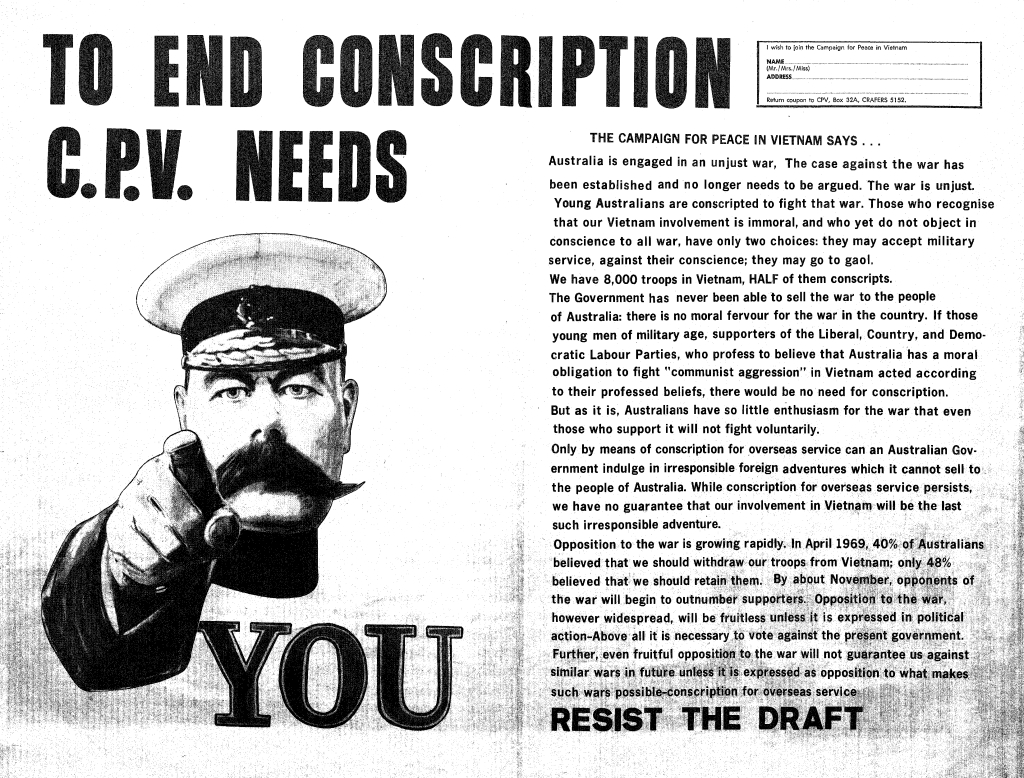The advent of war inevitably elicits intensified emotions as the state and its opponents advocate their ideology and citizens absorb and respond to the collateral damage. The embodied experiences that stem from political upheaval have the power to ignite collective emotion, incite rebellion and inspire individual expression.
The University of Adelaide collections provide a unique insight into political events and the emotional responses they have evoked.
WWI Circular Replies
In WWI, the University of Adelaide Registrar posted enquiries as to the location, rank and wellbeing of enlisted graduates and students.
The replies from family members are held in the University’s Collection and reveal fragments of the soldiers lives and the impact of war on their loved ones.
WWI Circular Reply, John Wesley Blacket (left)
Born on 20 July 1886 in Gumeracha, South Australia. Attended the University of Adelaide between 1909 and 1913. Blacket served in the Expeditionary Forces at Gallipoli in 1915. He was killed in action near Messines on 4 July 1916 during a heavy artillery bombardment.
The Max Harris Papers
Max Harris (1921-1995) was a South Australian poet, author and publisher and is considered one of the founding members of Australian Modernism. The Max Harris Papers (MSS 92 H315p) are held in the University of Adelaide’s Manuscript Collection and a selection of his typescripts and handwritten poems are included throughout the Unsettling Certainties: Emotions Exhibited display.
In 1942, Max Harris lost close friend and co-editor of the University of Adelaide’s undergraduate literary journal Angry Penguins, Donald Bevis Kerr (1919-1942), also known as Sam Kerr. Kerr studied Arts and Literature at the University of Adelaide and served as President of the Arts Association. He died at the age of 23 while serving as a navigator in New Guinea. Harris later wrote of his loss.
To learn more about Max Harris, the documentary Von Loves Her Modernist has been made available as part of the Conference program, thanks to Rob George of Prospect Productions. It tells the story of Adelaide’s ‘enfant terrible’ and offers a fascinating view of cultural life in the 1940s. At its heart is the love story of Max and his wife Yvonne (Von) Hutton, who is interviewed for the film. To watch, use this link https://qrco.de/beYOPn. The film will be available to view until February 2024.

Australian War Memorial. P01273.005.
Public Domain.
The War over Hearts & Minds
Campaign for Peace in Vietnam
The Campaign for Peace in Vietnam was formed in July 1967 to oppose the Australian-American involvement in the Vietnam War. It was one of the most enduring and successful anti-Vietnam organisations in South Australia. The Campaign for Peace in Vietnam Papers 1968-1973 (MSS 0110) are held in the University of Adelaide’s collections.

SR/E 378.05 O5
In December 1969, protests against Vietnam War led to violent clashes between police and demonstrators in Adelaide

University of Adelaide Collections, Series 695, Item 0656.
University of Adelaide student newspaper, On Dit
Founded in 1932, On Dit has a long history of social and political activism and is the third oldest publication of its kind in Australia. The paper captures how the unsettling enabled by political activism is both emotional and a necessary part of reshaping our worlds.
Udo Sellbach’s etchings
The University of Adelaide holds two of Udo Sellbach’s etchings from his The Target is Man series, To Execute (1965) and To Persecute (1965), made in response to the Vietnam War. The works are on display as part of the Unsettling Certainties: Emotions Exhibited program or can be viewed here.
Sellbach is a celebrated printmaker, painter and educator who trained in the Bauhaus approach to design at Kölner Werkschulen (Cologne Academy of Fine and Applied Arts). In 1945, Sellbach served in the German army. Much of his work stems from the horrors that he encountered at this time.




